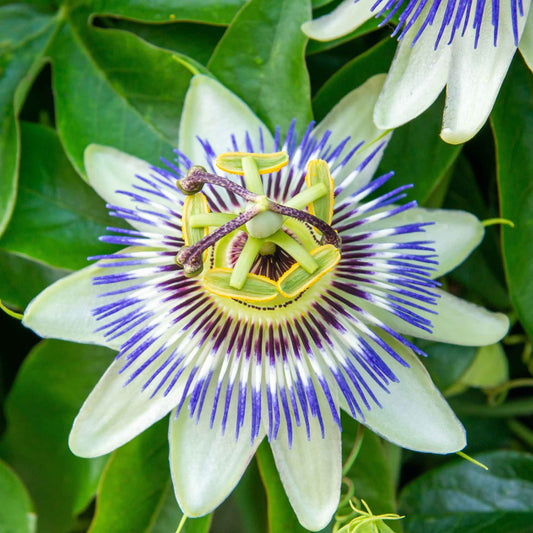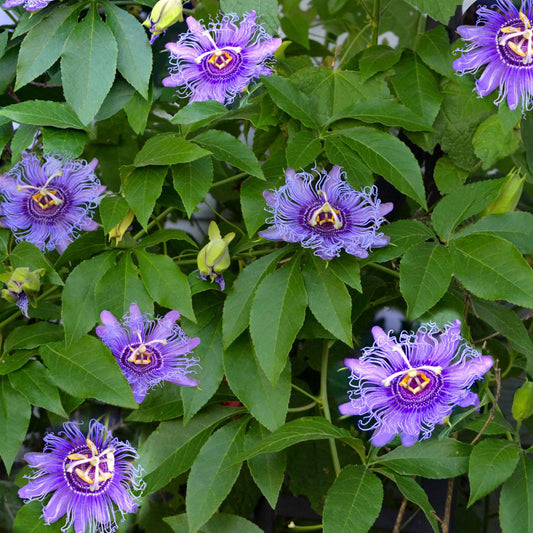-
main-collection-product-grid

Passiflora Seeds
Each exotic bloom lasts for one glorious dayPassiflora Seeds
Each exotic bloom lasts for one glorious dayRegular price $6.99Regular priceUnit price per -
main-collection-product-grid

Passiflora Seeds - Purple Passion Flower
Exotic flowers produce tropical sweet, seedy fruitPassiflora Seeds - Purple Passion Flower
Exotic flowers produce tropical sweet, seedy fruitRegular price $6.99Regular priceUnit price per -
main-collection-product-grid

Passiflora Seeds - Banana Passion Fruit
Sweet, tropical taste with notes of peach and nectarinePassiflora Seeds - Banana Passion Fruit
Sweet, tropical taste with notes of peach and nectarineRegular price $6.99Regular priceUnit price per
What makes passiflora so interesting
- 3 Passiflora seed varieties and mixes
- Easy to grow with long-lasting vines
- Thrives in bright, sunny growing areas
- Unusual and striking blooms
Your Best Bet for Exotic flowers that create tropical fruits
Passiflora, commonly known as passion flowers or passion vines, encompass a diverse genus with over 500 species, making them a captivating group of plants. Among the well-known species, passion fruit stands out for its delicious and nutritious fruit, rich in vitamins and antioxidants.
Top Features of Passiflora
Beyond their aesthetic appeal, passiflora species serve as host plants for butterflies, contributing to the ecological balance in gardens. Culturally, passion flowers hold significance worldwide, with associations ranging from Christianity to traditional medicine in certain cultures. Passiflora's adaptive features, such as structures that attract specific pollinators, contribute to their success in various environments. Additionally, some species offer edible flowers, adding an exotic touch to culinary endeavors. For horticultural enthusiasts, the diverse and multifaceted nature of Passiflora makes them a compelling subject of interest and a valuable addition to gardens.
Passion Flower Symbolism
Unique and intricate passion flowers are said to have symbolic significance, representing elements of the Passion of Christ. There are five petals and five sepals on Passion Flowers. In Christian symbolism, these represent the ten faithful apostles who stood by Jesus in the period leading up to the crucifixion. The Corona filaments that grow in a ring above the sepals and petals symbolize the crown of thorns. Three stigmas are said to represent the three nails that were used to hang Jesus on the cross. The five anthers represent the five wounds Jesus had when He was crucified. The fruit that passion flowers produce is also significant to Christians. It symbolizes the world Jesus left behind after He sacrificed Himself on the cross.
For more information about planting, growing, and caring for passiflora seed, see the Passiflora Seeds Planting Guide


